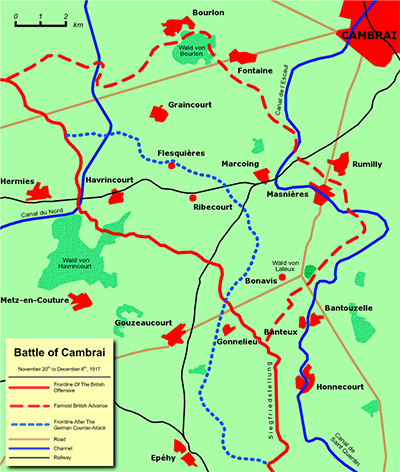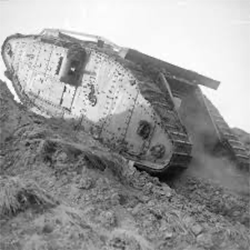The Battle of Cambrai
The Battle of Cambrai was an otherwise inconclusive World War I battle known for the use of a mass tank attack. 
Cambrai, in northern France, was part of the Hindenburg Line, a long series of defensive fortifications erected by the German Army in the winter of 1916–1917. The forces of the Allies wanted to capture the St. Quentin Canal and, moreso, wanted to use a large number of tanks to do it, achieving a surprise attack without the then-requisite bombardment first. The attack force did include nearly 500 tanks and also featured 1,000 guns and a great many soldiers. In order to achieve surprise, the Allied forces rolled their tanks into position the night before. Under the cover of cloud and then darkness, men and guns joined them. The battle commenced early on the morning of November 20. The tanks smashed through the defenses, pushing the Germans back along a line of six miles wide and four miles deep. 
Allied soldiers took more than 7,000 prisoners. The advance was so successful that reinforcements were not immediately available; that and the advent of bad weather stalled the attack. As well, many of the tanks, still relatively new to combat, suffered mechanical failures. The German Army counterattacked on November 30 and within a week had regained the territory that they had lost. Both sides declared an end to the fighting on December 6. The combined casualty total approached 100,000, with German totals slightly outpacing Allied ones. To the Allied commanders, the battle demonstrated the possibilities of using tanks in battle–not in the swamps of Passchendaele but on the plains of northern France. |
|
Social Studies for Kids
copyright 2002–2026
David White




